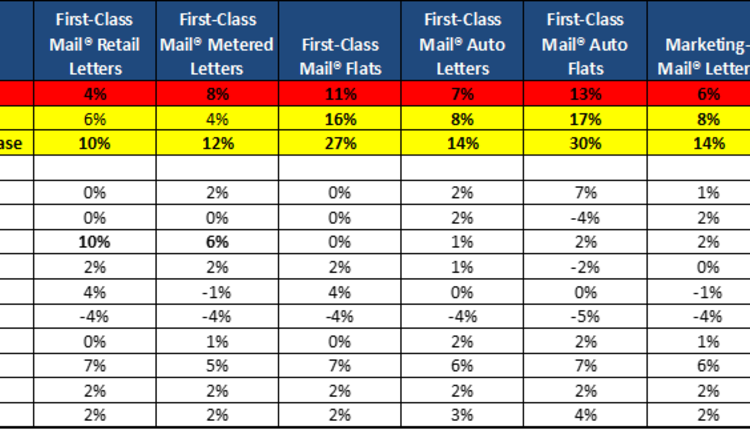Lost postage is a serious and pervasive issue for many companies, and yet, most have no idea they are losing millions of dollars because of it. Mailers need to know why this happens, where this money goes, how you can go about recovering your funds, and how to prevent this type of leakage in the future.
Main Reasons that Postage Funds Can Get Lost
1. Expense vs. Asset - Once the funds are deposited in the different postage accounts, most companies write it off as an expense. In other words, the money is spent. These postage balances are actually an asset of your company until the postage is utilized and should be treated as such.
2. Decentralized Oversight – Often, the metered postage is managed separately from the permits and mail house funding. There could also be multiple departments managing their own permits for different mailings or reply mail activities. Example: The Marketing Department has their own permit for mass mailings where Accounts Receivable uses a separate account for Business Reply Mail to get payments returned.
3. Multiple Locations – The management gets more difficult when each location sets up their own permits or have individually funded postage meter accounts.
4. Mailings run on mail service providers permit numbers – They will typically give you an estimate of the funds needed for your mailings, but most companies do not look at the final postage statements to validate what was spent.
5. Accounts are terminated or forgotten – In 2008 there were over 1.5 million postage meters in the US compared to less than 1 million today. This means that 1/3rd of all meters were returned during this period. There is a similar trend with permit accounts as more organizations are eliminating local Business Reply Mail and Postage Due accounts. Was there a process at your company to make sure each closed account got the funds properly returned?
This Is What Happens to the Lost Postage
Postage Meter Lost Funds – When a mail machine gets returned because it is no longer needed (or when you switch vendors), the money on the meter gets put back into the postage account. The final balance of this account is now available to be refunded. You may get a statement of the final postage balance and can contact the meter vendor to request a check for reimbursement. If these funds are not requested, only one of the meter vendors turns the funds over to the state's unclaimed funds offices. The remaining companies will hold onto the money through their USPS accounts until you request it. The question is, what visibility are they providing to you indicating funds are available, and if the office closed, where are they sending this information?
Permit Accounts Lost Funds – The USPS defines an inactive permit as “imprint, meter, or pre-canceled account as having no mailings or payment of fees during a 2-year period from the date of fee expiration.” If the balance exceeds $25, they are required to send the customer a letter with a Form 3553 to get your funds reimbursed.
In the Jan-Feb 2014 issue of Mailing Systems Technology, I wrote an article about how the USPS has been taking our permit funds when they become inactive and dormant. Since then, the Office of Inspector General of the USPS conducted a study confirming these findings and made recommendations for change that was rejected by USPS management. According to the study titled Dormant Advance Deposit Permit Accounts, Report Number FT-MA-15-001, “During fiscal years 2012 and 2013, the Postal Service refunded $9.2 million of that amount to customers; $15.6 million of customers’ unclaimed dormant account balances was considered income to the Postal Service during that same timeframe.”
The significance of this issue is that the USPS is admitting that it considers unclaimed dormant account balances as income. Also, during these two years (Fiscal 2012 and 2013), 63% of these dormant funds were not returned to customers. If we extrapolate these numbers over 10-20 years, there could be hundreds of millions in dormant permit funds that the USPS has held onto and made it very difficult for the average entity to claim.
The big issue comes with how the USPS handles these funds. With most organizations (corporate, non-profit, and state government), unclaimed funds are turned over to the state's unclaimed funds office, where it is easy to search for your money. These funds will typically remain visible on that state's website or on www.missingmoney.com until the money is claimed. With the USPS, at 24 months of inactivity, a notification is sent (USPS 16-7.3 Sample Add-Pos Non-Use Cancellation Notice). The entity has 30-60 days to collect their funds (or renew the permit), or the money gets transferred into general ledger account, where the money is considered income to the USPS. To make matters worse, these dormant permit accounts are deleted from POSTALONE! and archived one year from when the funds are transferred. The only way to get this money back is to know what funds you had lost, then to go to that specific local postmaster or district for help. There is a procedure that can be followed to get access to the information, but the visibility is lost at the local level.
Mail Service Providers' Lost Funds – Oftentimes, customers will use the permit accounts of their mail house or presort service for the ease of funding or because the company does not want to set up permits in the geographic area where the provider is located. Money will typically be deposited upfront to fund future mailings. On the invoice, the provider will list out the funds used by the recent projects.
The issue comes in with the auditing of the expenses and the management of the balances. We rarely see companies requesting postal statements and balance receipts of the funds utilized. To make matters worse, invoices typically give little or no detail or are difficult to decipher if you are not an expert in the mailing industry. Finally, very few clients check the detail of these invoices to know exactly what they are paying for. All this can lead to lost postage funds.
Steps for Identifying and Recovering Lost Postage
Postage Meters – The main area we focus on is gaining visibility to where there were prior meter accounts and comparing this to the current population. Look for any current and past reports you may have received from your postage meter provider. We also recommend doing a search of your accounts payable system going as far back as possible. Enter the mailing vendors' names and see where you had expenses that may no longer be active. Try to find specific invoices that have any of the following information that you will need when calling the meter vendor to validate if funds are available:
Once the funds have been identified, the vendor can send you a link to their online form where the funds can be requested.
Another strategy would be to think about where you had office closures or had changed meter vendors where funds could also be available. Finally, it is important to know your balances in all active accounts because we at times find funds sitting dormant in prepaid postage account when the location is actively using an advancing funds or vice versa.
Permit Accounts – This can be more challenging because the USPS offers very limited support in this area. The best way we have found is to go through your accounts payable files and look for transactions paid to “USPS”, “United States Postal Service” or “Postmaster…”. Look at the detail where you spent over $200, which is a typical annual permit fee. You will need to capture the following information for your search: location name, address, permit number, permit type, USPS Post Office name, USPS Post Office address.
Go to your local Postmaster to validate if funds are available. If you are large enough and have a postal liaison, you can ask them for assistance. Once the funds have been identified, fill out a PS Form 3533 to have the money returned. The USPS may be reluctant to want to help with this search either due to resources or lack of understanding of the issue. It is important that you stress that when they hold your funds they are acting like a bank and should be held to the same fiduciary standards. It is your right to have them search for funds that you held in their coffers.
Mail Service Providers – You would want to follow the same accounts payable search that you did in the sections above but look for businesses that had provided mailing services for you in the past. Some organizations code this expense in their systems when the transactions are being entered and others might need to remember what vendors had been used in the past. Go back to these providers and ask for any documentation detailing postage accounts they had maintained in your name to validate that all funds had been returned.
Best Practices to Keep This from Happening in the Future
Postage Meter Accounts – The best practice is to have online visibility to your postage balances. Most meter vendors can give you web access. This way, you can see your balances as well as every time the meter gets filled. If you have multiple meters, link them to this same online visibility and if possible, onto master account numbers. Now, if any office closes, the money will automatically go back into the master account to be used by other locations. Finally stick with one prefunding or advance postage strategy so funds cannot get confused.
Permit Accounts – Link all of your permits to a central CAPS Account or create visibility on the Business Customer Gateway. This way you can go onto the USPS website and see your account balances and transactions where funds were withdrawn. The best part is you can manage the funding and permit fees from one place vs. needing to scramble last minute to pay postage for mailing projects.
Mail Service Providers – The best practice is to use as few providers as possible. As part of the scope, have quarterly reviews where the details of your mailings, invoices and account balances are discussed. Make sure to go over at least a couple of invoices to understand their format and request additional detail if it is required.
Summary
This issue is only going to get bigger for the future. There is a huge consolidation happening in the mailing industry. As we migrate to digital, we are mailing from fewer places and with fewer providers. If not properly managed, this will cause more funds to get lost and with smaller numbers of experts to manage. By understanding what can happen to your funds and by developing structure around its future management, you will eliminate potential lost postage for your organization. More importantly it will make it easier to manage your mailing operations because you will have a higher level of visibility and control.
Adam Lewenberg, CMDSS, MDC, President of Postal Advocate Inc., runs the largest Mail Audit and Recovery firm in the United States and Canada. They manage the biggest mail equipment fleet in the world and their mission is to help organizations with multi-locations reduce mail related expenses, recover lost postage funds, and simplify visibility and oversight. Since 2013, they have helped their clients save an average of 60% and over $34 million on equipment, avoidable fees, and lost postage. He can be reached at 617.372.6853 or adam.lewenberg@postaladvocate.com.
This article originally appeared in the January/February, 2018 issue of Mailing Systems Technology.







![GettyImages-1170541989-[Converted]](https://cms-static.wehaacdn.com/mailingsystemstechnology-com/images/GettyImages-1170541989--Converted-.1803.widea.0.jpg)








